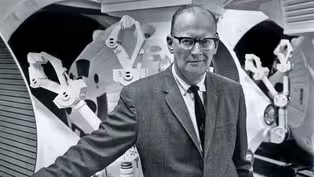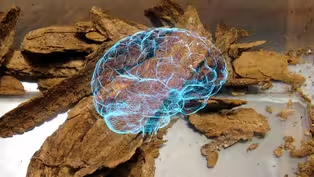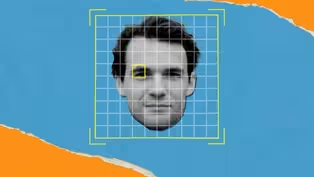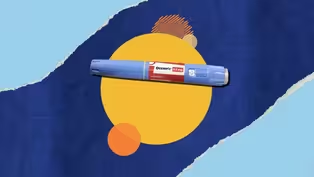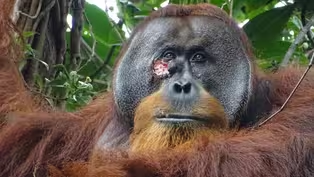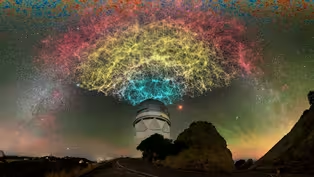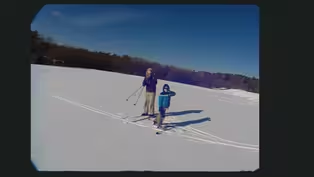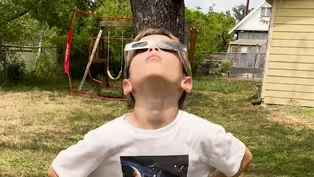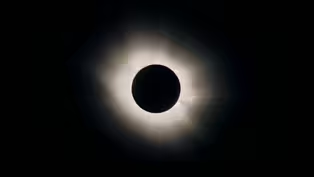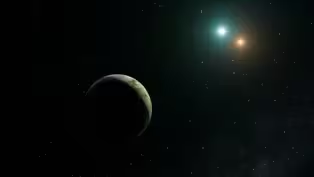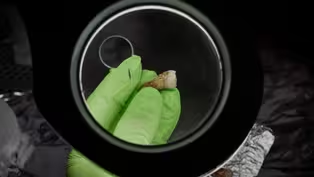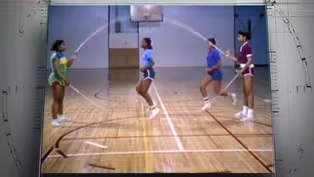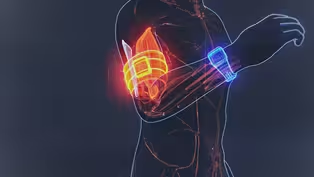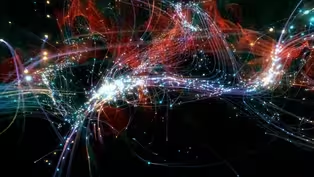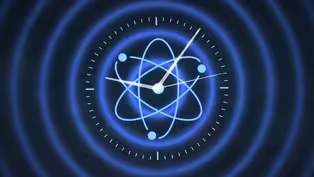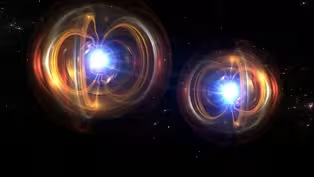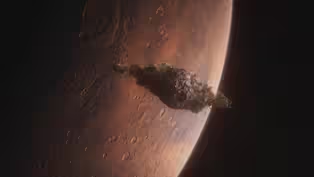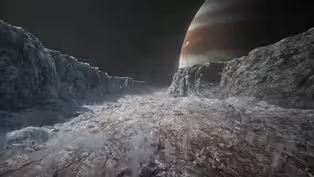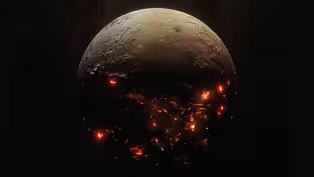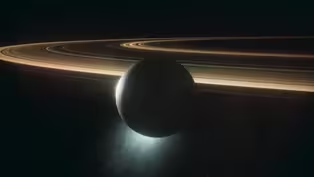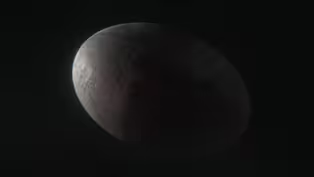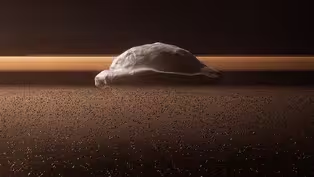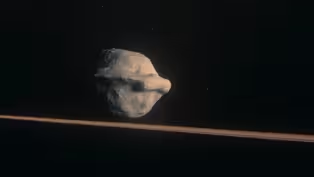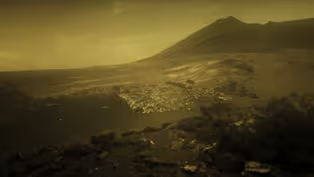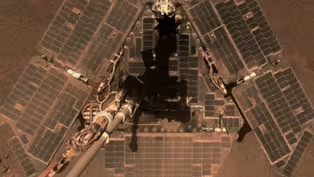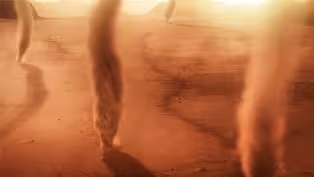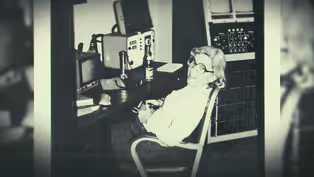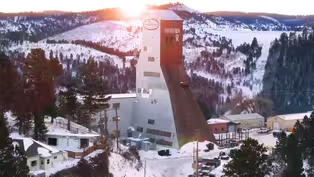
Ozempic's Surprising Real Power
Clip: Season 51 | 3m 51sVideo has Closed Captions
Blockbuster drug Ozempic keeps surprising scientists.
Scientists thought Ozempic, and other similar drugs, helped people lose weight by working primarily in the gut. But now it's looking like it's real power could be in the brain.
Problems playing video? | Closed Captioning Feedback
Problems playing video? | Closed Captioning Feedback
National Corporate funding for NOVA is provided by Carlisle Companies and Viking Cruises. Major funding for NOVA is provided by the NOVA Science Trust, the Corporation for Public Broadcasting, and PBS viewers.

Ozempic's Surprising Real Power
Clip: Season 51 | 3m 51sVideo has Closed Captions
Scientists thought Ozempic, and other similar drugs, helped people lose weight by working primarily in the gut. But now it's looking like it's real power could be in the brain.
Problems playing video? | Closed Captioning Feedback
How to Watch NOVA
NOVA is available to stream on pbs.org and the free PBS App, available on iPhone, Apple TV, Android TV, Android smartphones, Amazon Fire TV, Amazon Fire Tablet, Roku, Samsung Smart TV, and Vizio.
Buy Now

NOVA Labs
NOVA Labs is a free digital platform that engages teens and lifelong learners in games and interactives that foster authentic scientific exploration. Participants take part in real-world investigations by visualizing, analyzing, and playing with the same data that scientists use.Providing Support for PBS.org
Learn Moreabout PBS online sponsorship- Ozempic just surprised scientists again.
Scientists thought Ozempic and other similar drugs, like Wegovy, helped people lose weight by working primarily in the gut.
But now it's looking like the drug's real power could be in the brain.
The active ingredient in the drugs is called semaglutide.
Semaglutide is a molecule meant to mimic the hormone GLP-1.
- GLP-1 is made in the intestine and is released in response to food entering the intestine.
It's also made in the brain, and so because of this, both your gut, as well as your brain, are wired to listen to this GLP-1 signal - Naturally produced GLP-1 in the gut degrades in a few minutes.
In that time, it gets the pancreas to produce insulin, which helps move sugar out of the bloodstream and into the body's cells.
This is why the drugs can be hugely beneficial for people with diabetes.
When it became clear that semaglutide also helped people lose weight, and lots of it, scientists thought what made it so effective was how it can work in the gut, slowing down digestion, and as a result, decreasing appetite.
But it looks like it's the semaglutide in your brain that really helps people eat less.
Unlike the natural GLP-1, semaglutide takes days to break down, so it has time to travel into the brain.
In the brain, it works not only as a hormone, but also as a neurotransmitter, a kind of molecule used by the nervous system to transmit messages throughout your body, including your brain.
- When you inject a drug like Ozempic, that drug lasts for many days.
So now it has an opportunity to travel to the brain and also target some of those, you know, molecules that are there to listen to the GLP-1 message in the brain.
- In the brain, semaglutide makes its way to the hypothalamus, a small region that acts as the body's control center.
Once there, it inhibits the neurons that promote hunger and stimulates the neurons that suppress appetite.
Semaglutide can also affect the reward system where the brain releases dopamine, a hormone that can control motivation, pleasure, and cravings.
The relationship between dopamine and semaglutide is not completely understood.
But one idea is that it works like this.
When you see a fast food restaurant off the side of the road, your brain produces a rush of dopamine because it thinks a reward is coming.
This rush increases the chances that you'll pull over and get yourself a treat.
But with semaglutide in the brain, (screen screeching) that dopamine rush, or craving, is reduced, making it less likely you'll stop to get something to eat.
Because semaglutide decreases cravings, this may be why people report a reduced interest in drinking, smoking, (screen whooshing) shopping, and other addictive and compulsive behaviors.
For now, Ozempic is only approved to help people with diabetes lower their blood sugar, and Wegovy is only approved to help people living with obesity, or some weight-related health issues.
- One in every three people taking semaglutide will be able to lose more than 20% of their body weight.
That is very, very good.
- Newer medications like Zepbound and Mounjaro combine molecules mimicking GLP-1 and other hormones to help people lose weight even more effectively.
There's still a lot to learn about how exactly these drugs work, what the long-term effects might be, and what else they might treat.
And since there are also GLP-1 receptors in parts of the brain that control emotions, (screen whooshing) memory, and even motor control.
- That gives us an opportunity to ask, "Why are they there?"
Right?
What are they doing?
And that can give us a clue as to what this drug could potentially be used for outside of metabolic disease.
When you have a drug that targets the brain, you really have to worry about what else is it gonna do that you're not really initially seeing.
(mysterious music)
The Physics of Breaking, a New Olympic Sport
Video has Closed Captions
Clip: S51 | 1m 19s | Here are three moves in breaking, the newest Olympic sport, that appear to defy the laws of physics. (1m 19s)
What Happens to Your Body During a Speed Eating Competition?
Video has Closed Captions
Clip: S51 | 5m 16s | Competitive eaters stretch their stomachs beyond limits. Here’s what happens inside their bodies. (5m 16s)
Flight Turbulence Is Actually Getting Worse
Video has Closed Captions
Clip: S51 | 1m 48s | It’s not all in your head - flights really are bumpier these days. (1m 48s)
Sir Arthur C. Clarke's Vision of the Computer-Dominated Future
Video has Closed Captions
Clip: S51 | 1m 39s | Watch this interview with Sir Arthur C. Clarke for The Mind Machine (1978.) (1m 39s)
How Medieval Armorers Made Knights Bulletproof
Video has Closed Captions
Clip: S51 | 2m 15s | Knights and firearms clashed on the battlefield for over 200 years. (2m 15s)
Video has Closed Captions
Clip: S51 | 1m 2s | Hurricanes are getting more intense, faster. (1m 2s)
This Powerful Psychedelic May Help Treat Opioid Addiction
Video has Closed Captions
Clip: S51 | 3m 28s | In recent decades, there's been renewed interest in studying ibogaine. (3m 28s)
Can Technology Detect Deepfakes Better Than Humans Can?
Video has Closed Captions
Clip: S51 | 7m 9s | AI-generated photos are video are getting so good that it’s hard for humans to tell what’s real. (7m 9s)
What Happened to the Hole in the Ozone Layer?
Video has Closed Captions
Clip: S51 | 3m 13s | In the 1980s scientists discovered a crucial part of the Earth’s atmosphere was extremely thin. (3m 13s)
A Hidden Cause of Sinkholes Is Lurking Underground
Video has Closed Captions
Clip: S51 | 2m 21s | About 40% of the U.S. is susceptible to sinkholes. (2m 21s)
Ozempic's Surprising Real Power
Video has Closed Captions
Clip: S51 | 3m 51s | Blockbuster drug Ozempic keeps surprising scientists. (3m 51s)
What Dating Apps Know About You
Video has Closed Captions
Clip: S51 | 2m 51s | You might be collecting matches, but dating apps are collecting your data. (2m 51s)
These cheeses are at risk of going extinct
Video has Closed Captions
Clip: S51 | 1m 11s | The culprit is a lack of microbial biodiversity in the mold used to make iconic French cheeses. (1m 11s)
First ape ever seen using medicinal plant to treat wound
Video has Closed Captions
Clip: S51 | 1m 58s | After this orangutan sustained a gnarly facial wound, he did something kind of human-like. (1m 58s)
Total Eclipse in the Heart of Texas Hill Country
Video has Closed Captions
Clip: S51 | 6m 41s | People from all over the country converge on a small Texas town to see a total solar eclipse. (6m 41s)
New map of the universe hints that dark energy may be evolving
Video has Closed Captions
Clip: S51 | 3m | Dark energy fundamentally shapes our universe and what astronomers know about it might be wrong. (3m)
Are winters getting less snowy?
Video has Closed Captions
Clip: S51 | 4m 49s | It’s not just your imagination, winters across the U.S. are changing. (4m 49s)
How America watched the solar eclipse
Video has Closed Captions
Clip: S51 | 2m 13s | Millions witnessed the Moon cover the Sun on April 8, some viewers sent us their videos. (2m 13s)
How to watch the eclipse without burning your eyes
Video has Closed Captions
Clip: S51 | 1m 59s | A total solar eclipse is coming. If you want to check it out, you need eye protection. (1m 59s)
Rare stellar explosion will ignite a "new star"
Video has Closed Captions
Clip: S51 | 1m 17s | Sometime between now and September a star will explode. (1m 17s)
The discovery of worlds beyond our solar system
Video has Closed Captions
Clip: S51 | 1m 39s | How did we discover exoplanets? (1m 39s)
The force that makes up more than half of the universe
Video has Closed Captions
Clip: S51 | 1m 40s | Dark Energy was first discovered in 1998, and scientists don’t fully understand it. (1m 40s)
How parrots swing like monkeys
Video has Closed Captions
Clip: S51 | 1m 36s | Like monkeys, parrots are also able to travel by suspending their body weight. (1m 36s)
Who is the Mystery Man Buried Under Notre Dame?
Video has Closed Captions
Clip: S51 Ep18 | 3m | Can scientists identify the man buried inside a mysterious coffin found under Notre Dame? (3m)
Lost Tombs of Notre Dame Preview
Video has Closed Captions
Preview: S51 Ep18 | 30s | Mysterious bodies are found under one of the world’s most famous cathedrals. (30s)
Building Stuff: Change It! Preview
Video has Closed Captions
Preview: S51 Ep17 | 30s | From electric flight to artificial noses, engineers are finding new ways to preserve our planet. (30s)
Building Stuff: Reach It! Preview
Video has Closed Captions
Preview: S51 Ep16 | 30s | Humans are born to roam. See how engineers are inventing new ways to explore and extend our range. (30s)
Creating a Robotic Double Dutch Machine
Video has Closed Captions
Clip: S51 Ep15 | 5m 8s | Blending innovation and culture, engineers bring a robotic Double Dutch machine to life. (5m 8s)
Building Stuff: Boost It! Preview
Video has Closed Captions
Preview: S51 Ep15 | 30s | Is engineering humanity’s superpower? See how we can amplify our natural abilities in amazing ways. (30s)
The Most Baffling Idea in Physics, Explained
Video has Closed Captions
Clip: S51 Ep14 | 3m 33s | Quantum entanglement defies our everyday understanding of reality. (3m 33s)
How Atomic Clocks Keep Perfect Time
Video has Closed Captions
Clip: S51 Ep14 | 2m 15s | Atomic clocks use quantum physics and the resonant frequency of atoms, like cesium, to define time. (2m 15s)
Decoding the Universe: Quantum Preview
Video has Closed Captions
Preview: S51 Ep14 | 30s | Dive into the universe at the tiniest – and weirdest – of scales. (30s)
Solar System: Wandering Worlds Preview
Video has Closed Captions
Preview: S51 Ep13 | 30s | Meet the surprising, oddball worlds moving around our solar system. (30s)
Could Mars Have a Ring Around It One Day?
Video has Closed Captions
Clip: S51 Ep13 | 2m 16s | The moon Phobos has a mysterious origin but a certain expiration date. (2m 16s)
Cameras Capture Earthbound Meteorite
Video has Closed Captions
Clip: S51 Ep13 | 1m 39s | Some large meteorites survive their descent through our atmosphere and land on Earth. (1m 39s)
Video has Closed Captions
Clip: S51 Ep12 | 55s | As comets cross the invisible boundary known as the ice line, their ice starts turning into gas. (55s)
This Moon May Have the Ingredients for Life
Video has Closed Captions
Clip: S51 Ep12 | 2m 14s | The ocean beneath Europa’s icy shell might be an ideal environment for life. (2m 14s)
Solar System: Icy Worlds Preview
Video has Closed Captions
Preview: S51 Ep12 | 30s | Visit strange, frozen worlds to discover the bizarre ice that forms beyond Earth. (30s)
This Tiny Moon Is a Volcanic Powerhouse
Video has Closed Captions
Clip: S51 Ep11 | 2m 45s | Io’s intense volcanic activity defies all expectations. (2m 45s)
Solar System: Volcano Worlds Preview
Video has Closed Captions
Preview: S51 Ep11 | 30s | Discover the powerful volcanic eruptions that have shaped worlds across our solar system. (30s)
Enceladus: A Frozen Moon With Explosive Eruptions
Video has Closed Captions
Clip: S51 Ep11 | 1m 56s | Enceladus’ small size and icy surface is no limitation to its extreme volcanism. (1m 56s)
Could This Icy Moon’s Ocean Support Life?
Video has Closed Captions
Clip: S51 Ep11 | 1m 21s | Hydrothermal vents in Enceladus’ ocean may hold the promise of life. (1m 21s)
Why is Haumea Shaped Like an Egg?
Video has Closed Captions
Clip: S51 Ep10 | 2m 30s | Most objects with a radius over 200 miles are spherical, but Haumea is an exception. (2m 30s)
Solar System: Strange Worlds Preview
Video has Closed Captions
Preview: S51 Ep10 | 30s | What are the weirdest worlds in our solar system, and how did they come to be? (30s)
How a Walnut-Shaped Moon Help Shape Saturn’s Rings
Video has Closed Captions
Clip: S51 Ep10 | 2m 35s | For millions of years, a tiny moon has made a significant impact on the structure of Saturn’s rings. (2m 35s)
Venus: The Planet With Battery Acid Clouds
Video has Closed Captions
Clip: S51 Ep9 | 3m 27s | This is what it would be like to walk on the surface of Venus. (3m 27s)
How the Martian Atmosphere Helped Nasa’s Rovers Restore Energy
Video has Closed Captions
Clip: S51 Ep9 | 2m 59s | Martian dust devils may have helped NASA’s rovers restore power during mission. (2m 59s)
Solar System: Storm Worlds Preview
Video has Closed Captions
Preview: S51 Ep9 | 30s | Discover the dramatic forces creating spectacular weather on neighboring planets and moons. (30s)
How Vera Rubin broke barriers in astronomy
Video has Closed Captions
Clip: S51 Ep8 | 4m 4s | Vera Rubin's work provided convincing evidence for a mysterious substance, dark matter. (4m 4s)
The Deepest Underground Lab in the U.S.
Video has Closed Captions
Clip: S51 Ep8 | 1m 44s | A team of researchers hunt for dark matter deep underground in the Black Hills of South Dakota. (1m 44s)
Providing Support for PBS.org
Learn Moreabout PBS online sponsorship
- Science and Nature

Capturing the splendor of the natural world, from the African plains to the Antarctic ice.

- Science and Nature

Learn how centuries of knowledge helped our ancestors understand the mysteries of space.












Support for PBS provided by:
National Corporate funding for NOVA is provided by Carlisle Companies and Viking Cruises. Major funding for NOVA is provided by the NOVA Science Trust, the Corporation for Public Broadcasting, and PBS viewers.





